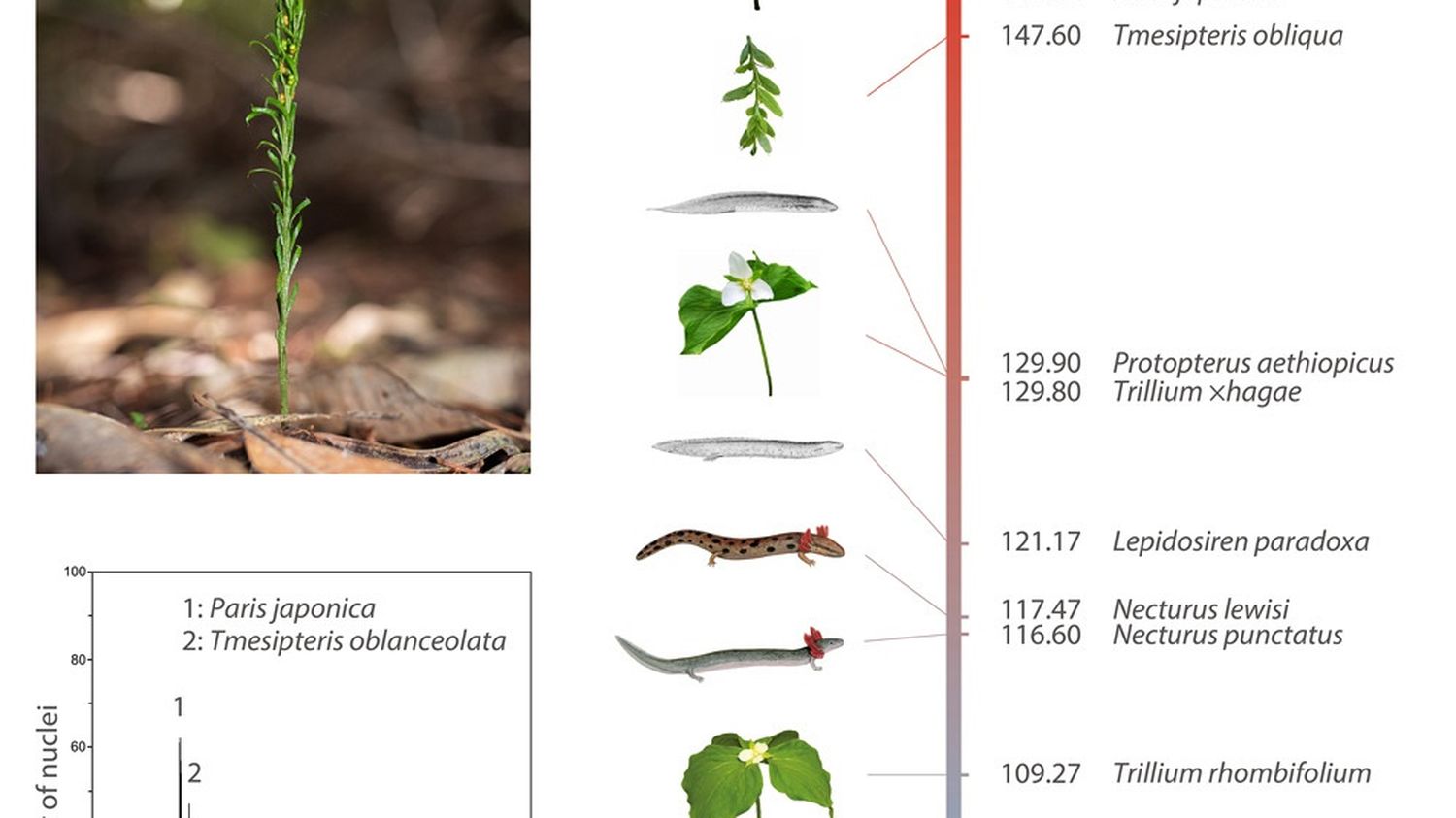It is undoubtedly an absolute record: we will probably not discover a greater one. However, it is a small fern, very simple, but yes, its genome is five times larger than ours!

Published
Reading time: 2 min

Hervé Poirier, editor-in-chief of the scientific magazine Epsiloon, tells us about a small plant that looks like nothing, but which astounds botanists: it has the largest genome on the planet! What is the purpose of the gigantism of the genome of this little fern?
franceinfo: This little fern holds an absolute record?
Hervé Poirier: This little plant has 160 billion 750 million letters in its genome! Absolute record, yes. This is 11 billion more than the little Japanese flower which until now held the record. Above all, it’s 5 times more than us! A real narcissistic wound for humans, who easily imagine themselves at the top of the tree of life.
The researchers who have just presented this monster are specialists in this quest for large genomes. They were the ones who, 10 years ago, had already spotted the little Japanese flower. And they think they will now have a hard time finding anything better. So yes, we probably have here, the living being with the largest genome on the planet!
And what does this little plant look like?
Not much actually… It is a psilote, a cousin of the fern, which grows in the forests of New Caledonia – Tmesipteris oblanceolata for the close friends. It’s just a stem of about twenty centimeters, very small, without a real root, without real leaves, without a flower. It is undoubtedly quite close to the first plants of 400 million years ago. In short, this monster easily goes unnoticed – you can easily walk on it without realizing it.
But why has such a simple and archaic plant developed such a gargantuan genome?
This is the question that fascinates botanists. As early as the 1960s, they noticed that there is no relationship between the complexity of an organism and the size of its genome. They called this the “C-value conundrum” – c for “complex.” So what is this genetic gigantism for? A priori, for our little pilot, it is rather an energy handicap. It must collect a lot of atoms, and therefore a lot of minerals, to form its DNA and duplicate it with each cell division.
And then, only a small part of its genome corresponds to genes, which code for functions – the rest is non-coding. How does the plant’s cellular machinery manage to access it in all this jumble? We don’t know: the psilot genome has not been sequenced, just quantified. And given its size, not sure that modern techniques are sufficient to find the genes inside.
In short, the psilote is a mysterious monster, which makes the “enigma of the value C” more intriguing than ever… So try not to crush it by accident, if you wander through the New Caledonian undergrowth: c He is the greatest giant of botany.
